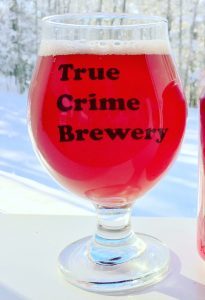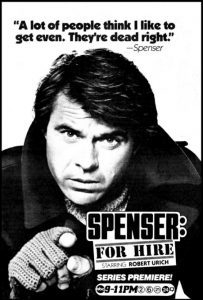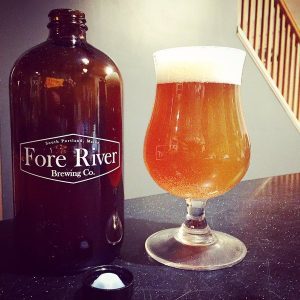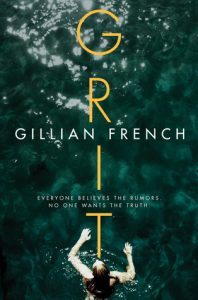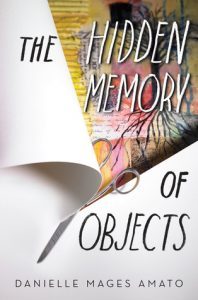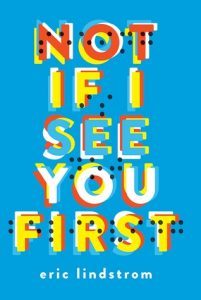Kathy Lynn Emerson's Blog, page 40
June 27, 2017
The Coastal Maine Botanical Gardens
by Barb, stuck in Boston because she’s selling her house, but soon to be spending more time in Maine!
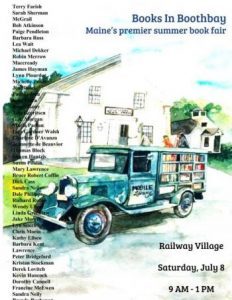 We hope many of you, both authors and readers, will be coming to visit us soon at Books in Boothbay at the Boothbay Railway Village on July 8, from 9:00 am to 1:00 pm. If you’re coming, you may be wondering, what shall I do while I’m in the Boothbay region?
We hope many of you, both authors and readers, will be coming to visit us soon at Books in Boothbay at the Boothbay Railway Village on July 8, from 9:00 am to 1:00 pm. If you’re coming, you may be wondering, what shall I do while I’m in the Boothbay region?
We have lots of fabulous things to do. Eat lobster by the water. Take a tour boat or a kayak. One place my husband Bill Carito and I always recommend is the Coastal Maine Botanical Garden. We’re members, so we go frequently. We always go when our family is visiting because our granddaughter loves the place so much. There’s a wonderful children’s garden with plenty of activities, but lots of wonderful spaces for adults, too.
Lea Wait and I both live on the peninsula (at opposite ends). Lea’s written about visiting the gardens both in summer and in winter.
The last time we were there was in mid-June. You’d think it would be a not-great time. The wonderful flowering bulbs and bushes are done, and the annual flowers not yet out, especially with the cold, wet spring we had this year. Nonetheless, we had a terrific visit.
Here are some of Bill’s photos from the day. I hope you’ll consider coming for Books in Boothbay and take time afterward to tour the garden.



Fairy houses
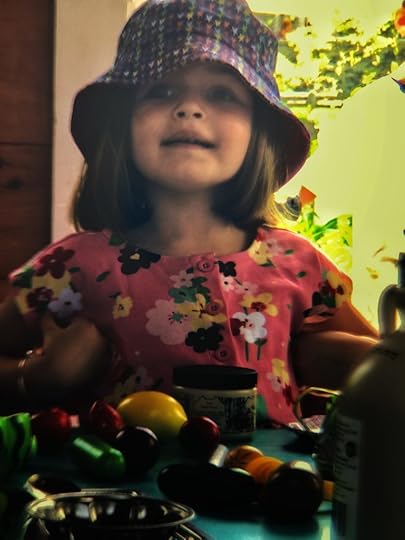

Frog

Turtle

[All photos in this post are by Bill Carito. If you like them and want to see more, you can friend him on Facebook at https://www.facebook.com/bcarito and follow him on Instagram at billcarito and bill.carito.colorphotos.]
Save
Exploring Indolence
Kate Flora: When I told my husband Ken that my goal for the summer was to embrace

Watching the water’s shadows and reflections
indolence, he responded that he thought that was kind of a negative word. He may be right, and I would welcome suggestions from all of you for a better term. Here’s what you will be describing.
Ever since I bought my first computer and joined my fellow writers in the unpublished writer’s corner thirty-four years ago, I’ve been an obsessive writer. I like obsession. I embrace obsession. I thrive on those hours when I get to be glued to my keyboard, the words and stories flowing, my characters taking wing and sometimes misbehaving. I have loved being in story and seeing where the adventure takes me. My trust laptop has been lugged all over the world because I seem never to have been without a deadline, or a final set of edits, or something that has to be created that just can’t wait.
Well. I’m not going to stop writing, but I am going to step back from letting that laptop control my life. Just imagine how much lighter I will feel if I’m not hiking through the Czech Republic with a laptop in my backpack?
Thus–Indolence.

The lavender Mother’s Day rose from my son
Just like learning the discipline of writing, though, I think learning the discipline of indolence, or getting into the zen of gardening, or taking the time to watch the clouds, or simply sitting and inhaling the magic of Harpswell sunsets, will be a challenge. I get this restless feeling when I’m not working. When I’m trying to beat back the goutweed that is devouring a flower bed, I find that I am making lists of what I need to do in the writing world. I will be admiring the clear spot that I’ve finally carved from a wilderness of weeds, and suddenly I will be thinking: No. Wait. That interview is still too short. Something else needs to come out in it which will connect to something a character said earlier. I will be wondering: Where, exactly, has Heidi gone, and is she safe or is she in danger? And when we will finally find a body–this is a murder mystery, after all.
Okay. So achieving indolence will not be easy. I can loll about, reading a novel, from perhaps half an hour before I start making a list of chores to be done and get snapped back that elusive plot again.
But it is a start.
I’ve long said that writers need to pay attention to the world that surrounds us so that we

Watching clouds above Lake Lucerne
can refill the well of character, setting, and detail. I know that the creative soul needs nourishment, not just steady work and endless applications of seat to seat. So maybe, despite the pleasure with which I announce my new dedication to indolence, I am lying to myself, and to you. Maybe this, too, is part of the writer’s work.
What do you think?
June 25, 2017
Maine Crime Writers share what we’re reading
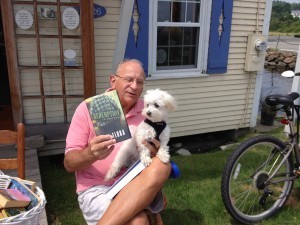
A man called Dave, a dog named Reny, and a book by Kate
It’s summertime, and that means reading. Even those of us who are in writer’s jail are finding time to pick up a book, and what a wide variety of things we’re reading. Here’s a sample:
Kate Flora: I’m reading Michael Lewis’s The Undoing Project, the fascinating story of Danny Kahneman and Amos Tversky and their research into the psychology of decision-making. That’s on my kindle. Usually, I have at least three books going at once, so I’m also reading Bobbie Ann Mason’s The Girl in the Blue Beret, because we were in Normandy just before the D-Day commemorations, and so I’m reading World War II novels. I started Frederik Bachman’s Beartown, but have temporarily paused because it is not nearly so light-hearted and charming as A Man Called Ove or his other two books that I’ve read. I’ll probably go back and finish because I love his storytelling.
Lea Wait: In the past couple of months I’ve main being reading for research .. .but then took some binge time to read books I just enjoyed, and which weren’t set in New England! I’ve read several of Ed Ifkovic’s historical mysteries centered around the life of Edna Ferber, a fascinating writer I didn’t know nearly enough about. Most recently – OLD NEWS, set in Chicago in 1923 about the secrets hidden in an immigrant Jewish community. Excellent! I also caught up with Margaret Maron’s DESIGNATED DAUGHTERS – every one of her mysteries is a treat, and takes me into southern culture. Right now I’m reading Sarah Maine’s THE HOUSE BETWEEN TIDES, a multi-generation gothic mystery set in Scotland’s Outer Hebrides. Reading is my way of traveling ….
Dick Cass: Joan Didion South and West (notebooks)
Howard Frank Mosher On Kingdom Mountain
(“All the best stories are about love,” says Jane Hubbell Kinneson.)
Dana Stabenow Less Than A Treason
Very cooling . . .
John Clark: I just started reading Transcendent by Katelyn Detweiler, Viking, 2016. ISBN: 9780451469632 I’m 119 pages in after about an hour and a half. Imagine you’re a high school junior and not long after American terrorists bomb Disney World, killing more than 10,000, you discover that your birth wasn’t exactly normal and lots of people believe you might be the salvation to a world gone to hell.
I got it from another book swapper on Paperbackswap (one of six like new YA books from the same person). If I’m this far, this fast in a book, I’m pretty sure it’s a winner.
Bruce Robert Coffin: Currently reading Ordinary Grace by William Kent Krueger and Gone Girl by Gilliam Flynn.
Maureen Milliken: I am in the midst of reading 75 self-published books as a judge for the Writers Digest Self-Published Contest. I have an August 1 deadline so they take up most of my reading time. I don’t like to read mystery and crime fiction — my favorite genre — while I’m in the middle of writing, so for my break from the self-pubs, I have Joseph Wambaugh’s The Fire Lover, waiting. I CAN read true crime, my second-favorite genre while I’m writing, and I can’t wait to get to it.
Joseph Souza: NOBODY’S FOOL by Richard Russo. An old classic by a fellow Mainer.
BEARTOWN by Fredrick Backman. A sad hockey story set in the woods of Sweden.
THE GOOD GIRL by Mary Kubica. So-so thriller.
Barbara Ross: William Kent Krueger, Trickster’s Point. I started reading Krueger’s Cork O’Connor series last year when he was the Guest of Honor at the New England Crime Bake. I’m almost current.
Kathy Lynn Emerson: I’m alternating between reading a new cozy, Bad Housekeeping by Maia Chance and rereading one of Dorothy’s Ellie Haskell mysteries, The Trouble With Harriet, both on my iPad.
June 23, 2017
Weekend Update: June 24-25, 2017
 Next week at Maine Crime Writers, there will be posts by Kate Flora (Monday), Kate Flora (Tuesday), Barb Ross (Wednesday), John Clark (Thursday), and Maureen Milliken (Friday).
Next week at Maine Crime Writers, there will be posts by Kate Flora (Monday), Kate Flora (Tuesday), Barb Ross (Wednesday), John Clark (Thursday), and Maureen Milliken (Friday).
In the news department, here’s what’s happening with some of us who blog regularly at Maine Crime Writers:
An invitation to readers of this blog: Do you have news relating to Maine, Crime, or Writing? We’d love to hear from you. Just comment below to share.
And a reminder: If your library, school, or organization is looking for a speaker, we are often available to talk about the writing process, research, where we get our ideas, and other mysteries of the business. Contact Kate Flora
June 22, 2017
A Photo Journey of the Beasties Who Walk Among Us
I’ll be honest… It’s been a rough month. My pup Killian, who shared my world from the moment he took his first breath back in December of 2006, passed away in May. There have been many, many tears since that time. Between that, trying to finish the latest book, and waiting on word for a house we may or may not be purchasing in Phippsburg (more on that next month – maybe), I’ve been more than a little bit distracted lately.
As a result, all the pieces I started to write for the blog this month just ended up scattered and just not that interesting. While I was looking for inspiration (aka killing time), I started looking through the photos on my phone. Gradually, a theme began to emerge. I know it’s not about crime. Some of the photos don’t even come from Maine. But frankly, with the amount of chaos in the world today, I could use a break from dark thoughts. So, this month I bring you a pictorial journey of a few of the animals who’ve made their way to my phone over the past year or so. I hope you enjoy!

Ben’s cousins live in Springfield, Vermont, so we usually make at least a little time for the Springfield Humane Society while we’re visiting. We took this sweet girl for a walk and had a rousing game of fetch while we were there. What a face!

While visiting Chicago this winter, Ben and I made the rounds to whatever animal-centric locale we could find. The Orphans of the Storm Shelter was a highlight to say the very least. Their cat rooms had been renovated recently, and were phenomenal. You can’t see it in this photo, but on either end of this massive room were whole sections of dog beds where the cats could snooze in the sunshine together. It was awesome!

This gorgeous girl is Jenga, a Dutch shepherd with Maine Search and Rescue Dogs (MESARD). Handler Chad Carleton. Chad and fellow handler Michele Fleury very kindly let me tag along during a training session in Dresden, and I snagged this photo in a rare down moment. I was first introduced to the breed while training with the Maine Warden Service K-9 unit a few days before up in Montville, when Corporal Michelle Merrifield and her Dutch shepherd Piper showed me the ropes.

Meet Kia… The dog who made me love my car dealer. I bought my Honda Element from Robert’s Auto in Bowdoinham in October of 2016, and have faithfully brought the beast (which I love, incidentally) in for tune-ups whenever needed — partly because Kia makes the whole thing such a pleasure.

Last spring, I took care of my nieces Maya (left) and Maggie (right). One of the things we did to fill our days was head out to Kid Hugging Day in Appleton – where we stopped and hugged some kid goats at Appleton Creamery, and pet some super sweet water buffalo calves at Maine Water Buffalo. Definitely a memorable day.

This handsome guy is head peacock at Appleton Creamery, where the nieces and I hugged kids and sampled goat cheese in April, 2016.
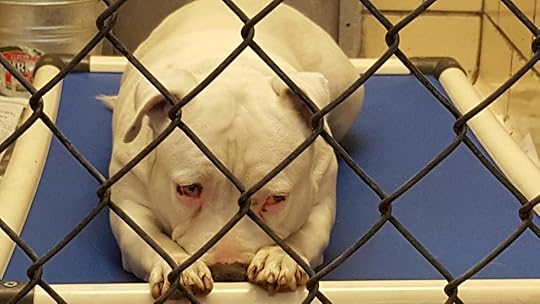
A less-happy shot, of one of the dogs from Orphans of the Storm Animal Shelter in Chicago. This sweet girl was being fostered but needed to come back to the shelter for some reason… Her face says it all. I can’t tell you how much I wanted to bring her home with us.

The saintly princess Serena, Ben’s cousins’ puppy. There’s an ongoing debate as to what breed Serena actually is – they were originally told part poodle, part Rottweiler. I believe the most recent theory is that there is some Rottie in there, but also some schnauzer…? Either way, she’s got a ton of personality, and is far too smart for her own good. Definitely a welcome addition to the family.

My lovely Ben, having a heart-to-heart with the goats of Sunflower Creamery in Cumberland.

Turtles! This shot was taken out on the pond in Cushing, where my mom lives. I love, love, love kayaking out and counting the little turtle heads as they pop up in the water. This weathered tree stump is the favorite hangout of turtles in the know.

And, finally… A parting shot of my beloved Killy. This was taken a couple of years ago, when he was at the vet waiting for a checkup. As shy as he was, I was always amazed at how well he did at these visits. I would love to say it was because he was naturally so well behaved, but I believe the endless supply of treats was the real motivator.
And that does it for this month’s blog post. If you’re so inclined, I would love it if you’d share your favorite animal-related photo from your own phone — or camera, for that matter — in the comments below. Those fuzzy faces never fail to bring a smile to my face! Oh, and if you’d like to see more of these types of photos from me, you can follow me on Instagram, where pretty much my favorite pastime is taking random photos of dogs, cats, bunnies, and birds.
Jen Blood is author of the USA Today-bestselling Erin Solomon Mysteries and Flint K-9 Search and Rescue Mysteries. To learn more, visit www.jenblood.com.
Is it the Beer Responsible for Maine’s Twisted Criminal Minds?
“Ale, man, ale’s the stuff to drink for fellows whom it hurts to think.” A. E. Houseman
I love beer. Good beer, in particular. Malty or hoppy, sour or citrusy, beer occupies a good deal of my thoughts. Craft beer made by real Maine brewmasters is a delightful benefit of living in this part of the country. But did you really expect anything else from a writer who delves into the motifs of death and deceit? A writer who needs to empty his brain of all that is evil by settling back with a cold one?
Or two!
My love of beer goes back to my childhood, when my father gave me a taste of his Ballantine Ale. To this day, I remember the cold hoppy taste of that wonderful brew poured out of that iconic green can. It’s one of those memories that’ve stayed with me. Then it was Budweiser, Miller GD, and PBR (“PABST BLUE RIBBON!” as villain Frank Booth announces in Blue Velvet). A revelation happened when Sam Adams came out with their delicious Boston Lager in the early 80s. I remember sitting with my buddy on the deck of his mother’s triple decker—two Irishmen—and marveling at this amazing new craft beer we just purchased. Move over Guinness. It was the first of its kind. And it was being made in my hometown of Boston.
I traveled to London and Germany in the eighties. The cask conditioned ales served in those posh pubs was like nothing I’d ever tasted before. Fish & Chips, and beer never tasted so good. Suffice to say, it led to an epic night at an insane soccer hooligan bar that led to us being thrown out.
God Save The Queen and Real Ales!
But it was the German beers that blew me away. The clove-banana scent of the heavenly hefeweizens. The brats and pretzels in the Hofbrauhaus. The crisp lagers and dark dunkels, all brewed in accordance with the German Purity Law. It convinced me that beer could be flavorful and diverse, not merely a means to catching a buzz.
Prosit!
Which is why Ben Franklin is attributed to saying, “Beer is proof that god loves us and wants us to be happy?”
Is it no wonder then that one of the main characters in my upcoming novel, THE NEIGHBOR, is the owner of a burgeoning Maine brewery? The Maine craft beer scene is so vital to our economy, and to our state’s identity, that it behooved me not to use beer in my fiction. Research is such a bitch!
Did you know that Portland, Maine is considered one of the top beer cities in the country? If you’re from this neck of the woods you’re well aware of this fact. It’s hard to miss all the breweries popping up in town. According to Forbes Magazine, Portland has 25.5 breweries per 100,000 people, the highest rate in the country. We celebrate beer with glorious sun-soaked festivals, outdoor patios, and winding brew tours. We’ve even traded beer filled cargo ships with the aptly named Iceland. One of my favorite breweries offers yoga and beer, but I’ll skip the yoga and go straight for the suds.
As a side note, we probably have more crime writers per capital than anywhere else in the country. Beer? Crime? Are you getting the picture? Devious thoughts seem to be fermenting in our dryly hopped heads. Maybe it’s the cold winters that draws us to those comfy milk stouts and earthy brown ales. Or maybe it’s all the beer we drink that gives rise to such evil contemplations.
Us writers have a complicated relationship with alcohol. Think of Hemingway, Faulkner, James Joyce and Cheever (who shares the same hometown with yours truly), just to name a few. Booze probably shortened the brilliant careers of many a successful author. Creativity engenders sensitivity, and alcohol, in the short term, can sometimes mask the pain of putting one’s art out there. Cheever’s descent into alcoholic abyss also hid the intense shame he felt at being gay in a society not ready to embrace homosexuality.
But I come here not bury beer but to praise it. It’s as diverse as our population: black lagers, Allagash White, brown ales and robust reds. Revel in its creative powers and healthful benefits. Can beer be a muse? Bottled, poured on draft, or canned, it’s worth considering.
I praise it for its restorative qualities after a hard day of writing. My author friends and I usually caucus at Fore River Brewery in South Portland to talk writing over some freshly poured ales. My friend, Tim Queeney, author of numerous novels, gave a wonderful talk on celestial navigation at Shipyard Brewery (with required beer breaks every fifteen minutes). Crime writing pal Bruce Coffin held his publication party for AMONG THE SHADOWS at Mast Head Brewery in Westbrook (and another one is scheduled in September). I studied my local brewery for the layout and design, and used it as a setting in my own novel. It was tough work, but someone’s got to do it.
I always loved when Spenser cracked a beer. I think that Spenser would be quite happy about the current brew scene, as he combined low brow tastes with high. If you’re interested in a book by book analysis of Spencer’s diverse taste in beer, check out this site. http://www.thrillingdetective.com/tri.... Ace Atkins, who took over Parker’s enterprise, has Spencer quaffing such fine suds as Sam Adams Oatmeal Stout and Oktoberfest, Blue Moon, and Harpoon Ale, which is quite a delicious beverage on draft.
Spencer, you’re hired as my barkeep!
So crack open a Bissell Brother’s Baby Genius, Portland Pale Ale, or Fore River Milk Stout on nitrogen. Grab a novel by one of your favorite Maine Crime Writers. Then kick back with that craft Maine beer while you read about murder, kidnapping and other hard boiled crimes. Or, should I say, wort boiled crimes.
June 21, 2017
Grand Argument Stories

Vaughn
What is storytelling? Simply put it is a means of communication. So if we are to discuss storytelling we must first understand what is meant by communication. The process of communication requires at least two parties: the originator and the
recipient. In addition, for communication to take place, the originator must be aware of the information or feelings he/she wishes to transmit, and the recipient must be able to determine that meaning. This is different from interpersonal communication which is a process where one party sends a message to a second party and the second party acknowledges they received and understand the message. As writers it would be great if our reader was able to immediately give us feedback As it is our only indicator of whether or not our message was received is book sales and that means a prolonged lag time.
Similarly, storytelling requires an author and an audience. And, to tell a story, one must have a story to tell. Only when an author is aware of the message he/she wishes to impart can he/she determine how to couch that message so it will be accurately received.
It should be noted that an audience is more than a passive participant in the
storytelling process. When I write the phrase, “It was a dark and stormy night,” I
have communicated a message, albeit a nebulous one. In addition to the words, another
force is at work creating meaning in the reader’s mind. The readers themselves
may have conjured up memories of the fragrance of fresh rain on dry straw, the trembling
fear of blinding explosions of lightning, or a feeling of contentment that recalls a
soft fur rug in front of a raging fire. But all I wrote was, “It was a dark and stormy
night.” I mentioned nothing in that phrase of straw or lightning or fireside memories.
In fact, once the mood is set, the less said, the more the audience can imagine. Did the
audience imagine what I, the author, had in mind? Not likely. Did I communicate?
Some. I communicated the idea of a dark and stormy night. The audience, however,
did a lot of creating on its own. Did I tell a story? Definitely not!
Grand Argument Stories
The question arises: Is telling a story better than telling a non-story? No. Stories
are not “better” than any other form of communication–just different. To see this
difference I need to define “story” so we can tell what a story is and what it is not.
Herein lies a political problem. No matter how I define “story,” there will be an
author someplace who finds his/her favorite work has been defined out, and feels it is
somehow diminished by not being classified as a story. Rather than risk the ire of
countless creative authors, I have limited my definition to a very special kind of story:
the Grand Argument Story.
As its name indicates, a Grand Argument Story presents an argument. To be Grand,
the argument must be a complete one, covering all the ways the human mind might
consider a problem and showing that only one approach is appropriate to solving it.
Obviously, this limits out a lot of creative, artistic, important works–but not out of being
stories, just out of being Grand Argument Stories. So, is a Grand Argument Story better
than any other kind? No. It is just a specific kind.
What’s In A Grand Argument Story?
A Grand Argument Story is a conceptually complete story with both an emotional and logical comprehensiveness. There are a number of qualities which determine whether a story is a Grand Argument or not. These are seen in the story’s Structure, Dynamics,
Character, Theme, Plot, and Genre.
Structure: the underlying relationship between the parts of a story describe its structure. A Grand Argument Story has a very specific structure which will be explored thoroughly in my next post.
Dynamics: the moving, growing, or changing parts of a story describe its dynamics. A Grand Argument Story has eight essential dynamics which I will explore in blog posts on the Art of Storytelling.
Character: Grand Argument Stories deal with two types of Characters: Overall Story Characters and Subjective Characters. These Characters provide the audience with the experience of moving through the story in both a passionate and an intellectual
sense.
Theme: Theme, in a Grand Argument Story, is tied to every structural and dynamic element. Theme provides the various biases and perspectives necessary to convey the story’s subject matter or meaning.
Plot: Plot in a Grand Argument Story is the sequence in which a story’s thematic structure is explored. Plot details the order in which dramatic elements must occur within that story.
Genre: Genre in a Grand Argument Story classifies the audience’s experience of a story in the broadest sense. Genre takes into account the elements of structure, dynamics, character, plot, and theme to define significant differences between various complete Grand Argument Stories.
These parts of a Grand Argument Story combine in complex relationships to create its Storyform. A Storyform is like a blueprint which describes how these parts shall relate in a particular story, regardless of how they are symbolized for the audience. It is such a
Storyform which allows such different stories as West Side Story and Romeo and Juliet, or Cyrano de Bergerac and Roxanne to share the same meaning while bearing little resemblance to each other. What these two pairs of stories share is virtually the same
Storyform.
The Free-form Author
While some authors write specifically to make an argument to an audience, many others write because they want to follow their personal muse. Sometimes writing is a catharsis, or an exploration of self. Sometimes authoring is a sharing of experiences, fragmented images, or just of a point of view. Sometimes authoring is marking a path for an audience to follow, or perhaps just presenting emotional resources the audience can construct into its own vision. Interactive communications question the validity of a linear story itself, and justifiably so. There are many ways to communicate, and each has just as much value as the next depending upon how one wishes to affect one’s audience. Sometimes, however, we just want to tell a story and entertain our audience.
In a series of blog posts I will discuss each of the elements listed above.
June 20, 2017
On The Fly
Dorothy Cannell: I was stuck. Absolutely no idea what to write for this month’s blog.  Usually something going on in my life will send up a little spark, and I’d think maybe I could get something that might be interesting or entertaining; but now nothing crept, let alone leaped out. This I thought is what makes fiction – just making it all up – so much easier than working with reality.
Usually something going on in my life will send up a little spark, and I’d think maybe I could get something that might be interesting or entertaining; but now nothing crept, let alone leaped out. This I thought is what makes fiction – just making it all up – so much easier than working with reality.
I remembered speaking with a writer years ago who told me she had absolutely no idea what she was going write about when she started a book. No germ of a plot, no characters in the wings. She just sat down and typed the first sentence and went from there. Now that I thought would be difficult, but why not on this occasion give it a try? Below is my attempt. All I knew five minutes ahead was that that opening sentence would include the word murder.
“I think I should murder Uncle Horace,” murmured Miranda
Her cousin, Sarah, blinked. “Where did that come from?” The two young women had been talking about the church jumble sale which had absolutely nothing to do with their uncle, other than the fact he looked like an article well past its prime that might be donated to it. He didn’t even live in Lesser Ditchwood where the event took place.
“Okay, if I must repeat myself – I think I should murder Uncle Horace.”
“Shush!” Sarah glanced nervously around the tearoom where they were seated at a table by the window; there were no other customers regaling themselves with orange pekoe and sconces. Betty who ran the place was in the back room. Even so, walls had ears and couldn’t be expected to realize Miranda was joking. Had to be, because she was a very nice girl except for a tendency to think a little too well of herself. “What’s the old boy done to offend? Forgotten to send you a birthday present?”
“Oh, no! He sent me the usual hundred pounds. He really is quite a dear old boy. Not stingy at all. He’s good for Christmas too.” Miranda took a bite of scone resulting in a muffled continuation. “It’s just unfortunate for him that he’s our only rich relation. I could love him to bits and he’d still have to go. You see, I’m in debt up to my ears, and the odd little contribution here and there from him or anyone else isn’t going to dig me out.”
“Debt? Who do you owe money? And why? I’ve never known you splurge beyond your means. You’re quite smug about making your own clothes and walking miles on end to get places when any reasonable person would take the bus.”
“Never mind the reason I’m in financial difficulties. Any suggestions on how to do away with our uncle would be appreciated.”
An enlightened look appeared in Sarah’s eyes. “It’s not you; it’s that idiot Randall Phips–Gibbons who’s in a fix. Goodness, Miranda, why do you always fall for his type? The last three were wastrels and he’s the worst of the lot. I’ve never seen him sober and everyone knows he’s been booted out of his club because he can’t honor his losses at cards.”
Miranda bit into another scone. “I’ve never thought much of your taste in men either. Accountants in pinstriped suits would bore me stiff in five minutes, but if it will relieve your mind Randall doesn’t come into this. Be a gem and focus on how to give our uncle the speediest possible sendoff into the next world.”
“I wish you’d stop saying our,” snapped Sarah, “it makes me all the more uncomfortable listening to this silliness.”
“Yes, I can see that. You wouldn’t be human if the thought isn’t sitting there in your head that you stand to inherit penny for penny what I do under his Will. It really was foolish of our parents to let on to us that one day we would both be very rich.”

And somehow, the necessary words were found
I enjoyed that little exercise so much I think with a little twiddling I could have the start of a short story. Perhaps someone out there will enjoy trying writing this on the fly. On that thought, I will return to my immediate reality of putting the dogs out, taking my granddaughter to school, and thinking about what to have for dinner. Maybe I can find a kernel of interest there for next month’s blog. Meanwhile I’ll need to work out who does murder Horace when he comes on his annual visit to Lesser Ditchwood …
Dorothy
June 19, 2017
Nancy Drew in the Rear View Mirror
John Clark with a look at how YA female protagonists have changed as I look at three recently published books. For years, I’ve joked that Nancy Drew, but Tom was Swifter. That’s not so true in contemporary YA fiction. Take Darcy Prentiss, the seventeen year old protagonist in Gillian French’s new book Grit. She’s had to deal with the death of her daredevil dad during a beer-fueled stunt while building the Penobscot Narrows Bridge when she was little. In the story, she’s trying to earn enough money raking blueberries to cover school expenses while drinking herself oblivious at night to blot out all the pain created by some foolish mistakes that led to a less than stellar reputation, the constant stream of trashing from her aunt and the bleakness she sees whenever she looks at her future. She’s also hiding her cousin Nell’s secrets in an effort to protect her from even greater emotional pain. Then, there’s the unsolved mystery surrounding the disappearance after a party on the blueberry barrens of her former best friend Rhiannon a year ago.
Things become even more stressful when she’s anonymously nominated as a contestant for Bay Festival Princess. Following her as she tries to hold onto some personal dignity, protect Nell and unravel the puzzle surrounding Rhiannon’s vanishing all make for a dandy first book. Gillian gets the whole blueberry culture Down East as perfect as possible, while giving us a strong girl who you can find walking the corridors in pretty much every high school in the ‘other’ Maine.
Danielle Mages Amato’s debut novel, The Hidden Memory of Objects, gives us a most unusual heroine in Megan Brown. Her older brother is dead, but what caused his death is at first murky and mysterious as well as unexpected and devastating to her and her parents. Tyler sheltered her from plenty of the slings and arrows that accompany being a somewhat shy fifteen year old on the fringes of Washington DC power circles. After falling into a period of emotional numbness, She starts snapping out of it when physical contact with important possessions her brother left behind create intense pain, followed by movie-like images of events that may have happened to him.
When she begins realizing she’s not crazy, she enlists the aid of Eric, a slightly odd classmate who is intrigued by her visions. Their search leads to Nathan, another teen who claims he knew her brother Tyler and worked on a project with him. Megan’s so intent on digging into the mystery surrounding Tyler’s death, she can’t seem to realize how shabbily she’s begun treating Eric. Watching her balance the relationships with the two boys and get them right is impressive, as is her dogged determination to unearth the real cause of Tyler’s death. Was it suicide, accident or a fatal overdose? As she inches nearer the truth, she meets Dr. Brightman, a noted expert on Lincoln’s assassination after finding a copy of his book among her brother’s possessions. He shares her strange talent and is eager for her to work with him. Add in more flashbacks, treachery, underground parties all over the DC area, a very powerful politician with a dangerous obsession and the three teens crashing a gala fundraiser at Ford’s theater and you have a finely crafted mystery featuring a gutsy girl and some supernatural elements.
Eric Lindstrom’s Not If I See You First (another debut novel) gives us Parker Grant who has some pretty strict rules to live by, topped by Rule #INFINITY: There are NO second chances. Violate my trust and I’ll never trust you again. Betrayal is unforgivable. She has good reason to need strong rules. When she was seven, her mother drove after drinking too much wine. She was killed and Parker lost her vision.
Three months ago, she woke one morning and found her dad dead in bed. Because an empty prescription bottle was found near him, the insurance company refused to pay, leaving her in a real jam. As a result, her aunt, uncle and two cousins moved 1600 miles and took over the household. Parker has a few resentments toward them, but is still so numb from the loss of her dad, she’s unable to sense how those around her are feeling, even her best friend Sarah.
What Parker believes is a workable survival mode begins to fail her when she discovers that Scott, the boy she loved and first kissed when they were thirteen, is attending her high school as a result of two schools merging. It was his perceived betrayal that started her retreat from the world and caused the creation of Rule #INFINITY. Her way of coping with stress and feelings is to run at the athletic field early each day. She’s adept enough at navigation so she can get from her home to the field, run herself into an endorphin high and get home without being seen. At least until the track coach discovers her and how well she performs.
Faced with Scott being back in her life, coupled with the hugely frightening chance to run track for her school and the un-thawing of her frozen emotions and buried grief hurts like crazy. However, Parker’s pretty strong and once she is honest with herself, watching her tackle all these challenges makes for a compelling and heart-felt story.
June 16, 2017
Weekend Update: June 17-18, 2017
 Next week at Maine Crime Writers, there will be posts by John Clark (Monday), Dorothy Cannell (Tuesday), Vaughn Hardacker (Wednesday), Joe Souza (Thursday), and Jen Blood (Friday).
Next week at Maine Crime Writers, there will be posts by John Clark (Monday), Dorothy Cannell (Tuesday), Vaughn Hardacker (Wednesday), Joe Souza (Thursday), and Jen Blood (Friday).
In the news department, here’s what’s happening with some of us who blog regularly at Maine Crime Writers:
An invitation to readers of this blog: Do you have news relating to Maine, Crime, or Writing? We’d love to hear from you. Just comment below to share.
And a reminder: If your library, school, or organization is looking for a speaker, we are often available to talk about the writing process, research, where we get our ideas, and other mysteries of the business. Contact Kate Flora

